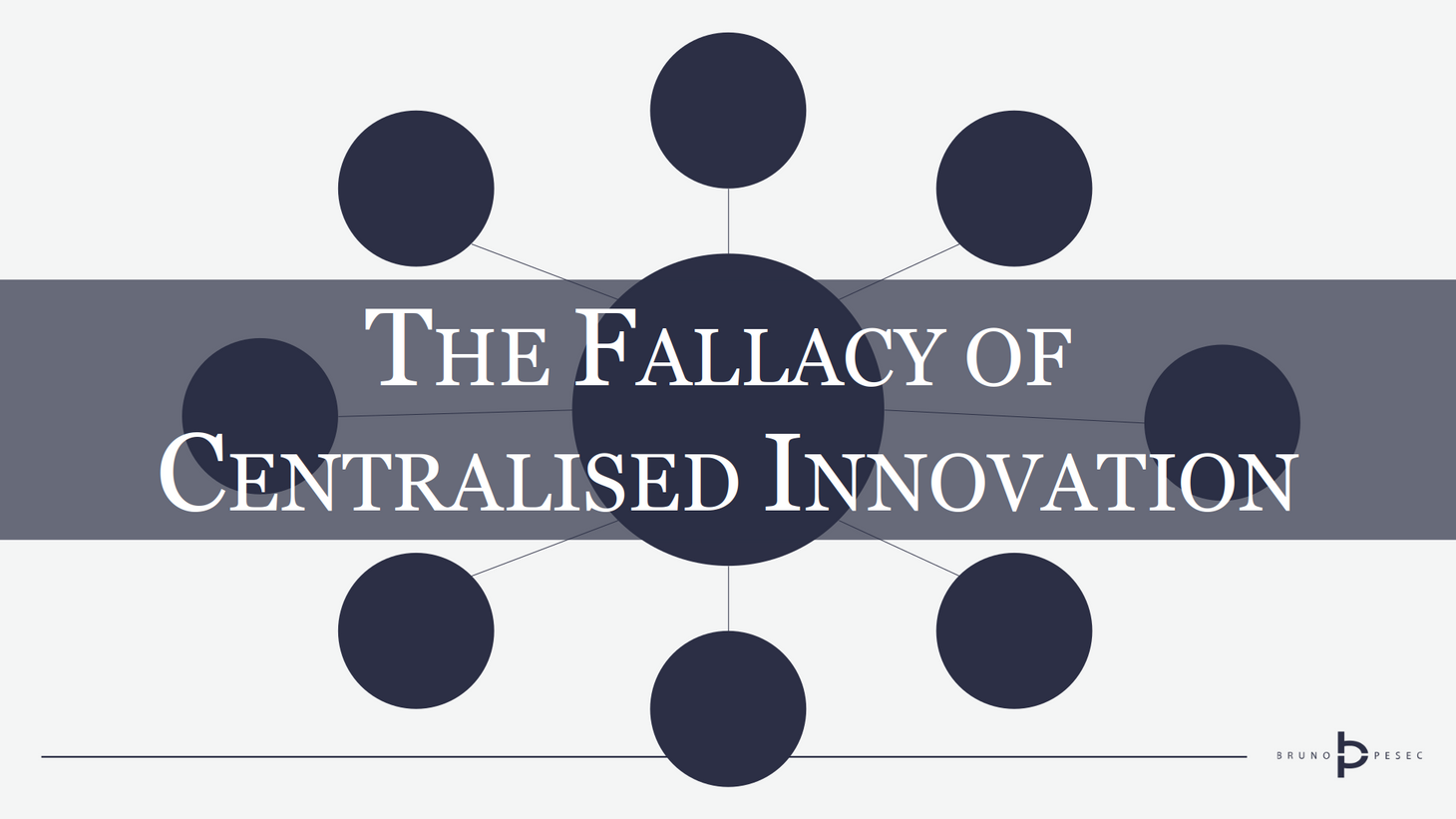The fallacy of centralised innovation
Beguiling promises; misplaced expectations.

Organisations, especially larger ones, usually consist of business units and support units (also known as shared services). The former have P&L statements and fund the latter. Consolidated decision making and lower costs are expected benefits of centralising support units.
Centralisation in the wild
I've seen three types of centralised innovation units:
- As a business unit; expected to develop businesses that bring in revenue. These were usually small relative to other units; and have limited funding. They are usually headed by a charismatic person who is able to navigate the organisation and secure support from key players. Their most common innovation tactics are partnering and acquisitions.
- As a support unit; expected to provide innovation expertise to the organisation. These usually consist of "modern" coach-like roles akin to various agile and service design professionals. It often collides with other support units that provide seemingly similar services. Since they are funded by the business units, that means they'll be working on innovation projects that are primarily in the "core business" space. These are usually longer (as in years), which on paper locks-in people for longer periods, contributing to further bloating of the support unit.
- As a mix between a business and a support unit; expected to bring in revenue with "disruptive," "radical," and "transformative" ideas, while also supporting all other units in their innovation efforts. Usually created as a response to inefficiencies of the preceding two set-ups, with the hope of getting the best of both worlds, while eliminating the worst. The result is most often the opposite. This type of units get squeezed both by the board—with high expectations on creating the future of the organisation—as well as other business units—for providing insufficient support to their "most critical" innovation projects.
While all three of these might seem good and manageable on paper, I find that all miss an important principle of organisation design: begin with the intended purpose of the organisation.
Innovation is an act of creating something new that generates value, and can come in many forms. It is one of organisational activities, but just like quality, it is not an end in itself.
How should you organise for innovation?
Start by understanding what kind of innovation you want to foster in your organisation. For example, if you focus on your offering and market you serve them in, then you can differentiate:
- Core. Innovations that focus on improving existing offerings and business models. What makes it different from continuous improvement is higher level of uncertainty and scope of proposed improvements.
- Adjacent. Innovations that focus on either serving existing offerings to new markets, or serving new offerings to existing markets.
- Transformational. Innovations that focus on serving new offerings in new markets. If successful, they will expand the core.
Once you figured what kind of innovation you want to see more of, work your way backwards and try to come up with the smallest organisation that will achieve that.
Let's say that you want to innovate on all three fronts. What you could do then is:
- Hire a group innovation manager (or lead, or head, or whatever), and place him or her in the CEO office (or equivalent). He or she should report directly to the CEO, and is responsible for innovation on the executive agenda. The job includes a lot of orchestration, and can be done by a single capable individual. Alternatively, the role could be expanded to a small team, no larger than five.
- Establish innovation teams in each business unit. Their job is core and adjacent innovations that are expected to improve revenue, cost, and customer satisfaction.
- Establish a specific project team for any innovation that is considered transformational. Institute metered funding, and always start by verifying if this opportunity is worth pursuing. Investment decisions should be based on market evidence and not just on financial projections. Make sure to understand the consequences of success.
- Establish a community of practice for innovation, without any reporting duties, and with voluntary participation. Content should focus on improving innovation capabilities. Think workshops, book clubs, clinics, and so on. Keep a list of people that attend, offer them placement on innovation projects.
The perennial pursuit
An acquaintance of mine once said "you cannot organise your way to excellence."
The same applies to innovation—but you should still try to organise yourself so you have a chance to innovate profitably.
Bruno Unfiltered
Subscribe to get the latest posts delivered right to your inbox. No spam. Only Bruno.




